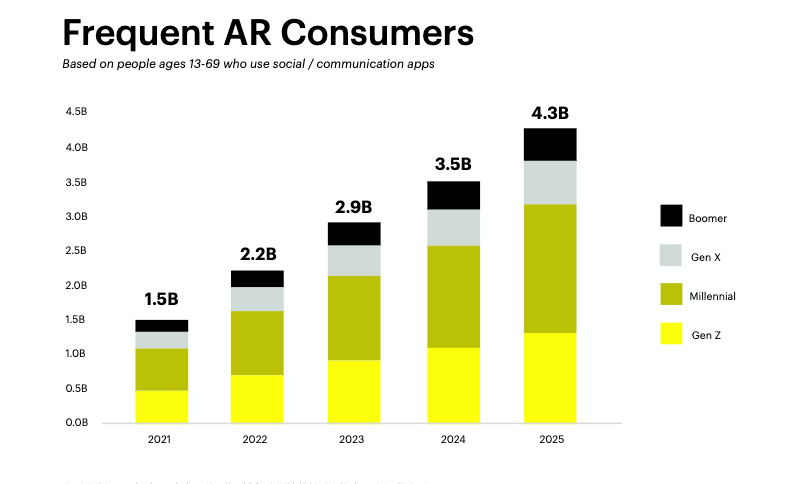How AR Is Shaping The Consumer Psychology

Are you curious about catching the consumer's attention? The simple way is underlying the understanding of consumer psychology. At that point, AR comes to the scene by shaping consumer psychology in a positive way.
Why is AR being mentioned frequently as a game-changing technology in today’s market? According to Snap Inc.’s CEO Evan Spiegel, an average of 200 million people use AR technology every day, and this is just the average of Snapchat users.
It is predicted that this number will increase exponentially in the future. It can be said that especially the Z generation has a great interest in AR. In fact, it is predicted that the number of frequent AR users will increase to 4.3 billion in 2025 according to the 2021 Snap Consumer AR Global Report.
Businesses will need to adapt this new technology to their business models in the near future, but first, we need to learn more about customer behavior to better understand this latest e-commerce trend.
Especially the motivations wants, and desires that underlie our psychology. These behaviors have a few essential parameters in consumer psychology, let's take a look at them.

The Power of Storytelling
Research has shown that AR has a tremendous capacity for storytelling, which affects consumer psychology. It is a known fact that people like storytelling rather than cold didactic narratives.
The human nature of the story connects us emotionally. We develop emotional bonds through AR technology, and we feel closer to the product we are considering purchasing.
Mindshare UK, a company that studies the impact of our neurological connections on the market, says that using AR while shopping increases the potential of buying a product by 70 percent. Since what a brand undoubtedly wants is to establish an emotional connection with its consumers, AR acts as a bridge that achieves this. In this way, the brands are able to provide emotional satisfaction to consumers.

A More Personalized Shopping Experience
According to consumer psychology, consumers expect the brand to match their personality significantly. Our autobiographical memory affects our consumption.
People like to share their favorite products with their close circles because in a way these products represent their personalities. AR technology allows brands to create and personalize content for consumers.
For a brand to be preferred by consumers, it must have a place in long-term memory and autobiographical memories. If you can’t remember one of the numerous advertisements you encountered yesterday, unfortunately, this means that you have not experienced those products correctly.
According to research, consumers who experienced AR remembered the brands more than those that did not. The word “experience” here emphasizes an important point.

Thanks to AR, consumers get to experience a product in real life, so the product gains memorability in a more realistic way. For example, Facebook's partner We-Makeup saw a 28-point lift in purchases using AR compared to their video ads.
Catching The Customers' Attention
Another advantage of AR technology is that it increases visual attention in consumers. According to a study, consumers using AR technology showed higher cognitive competence. But why does this matter?
The answer lies in the part of the brain that is associated with surprise. Attention-stimulated consumers activate this “surprise part” of their brain with AR products and show a withdrawal effect in the product's absence. In other words, they use AR more to avoid a lack of stimuli. In this way, the duration of the relationship that consumers establish with the product is longer and this provides a great advantage to the brands.
Act Today For Tomorrow
As you can see, the world of the future intersects with AR technology inevitably. Understanding AR truly will give us a huge advantage in understanding our consumers’ behavior.
The next generation will be more interested in this technology, and brands should follow closely and adopt these new solutions. Otherwise, they will not be able to keep up with the future and benefit from the endless advantages.
You can get in touch with our professional team today to learn more about how artlabs can help you create a digital presence and boost your e-commerce sales with minimum effort.












